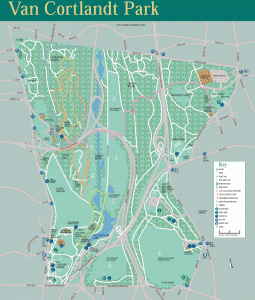Watch my video:
This is Salvi. He is from the Bronx NY.
During these eight weeks of FoodWorks we have explored the big topics of Local and Organic food, of which the State of Vermont has historically been a strong leader. We have listened to people talk about their initiatives and strategies to push for more local, organic and sustainable. In the end, the discourse about food here is the same as about decision-making: it has to come up from the grassroots and be healthy for the community.
But Vermont is very rural, rather homogenous and very old. My interest in food has emerged with a concern about the environment and its future with society, our future, in the face of population growth, resource depletion, rising class disparities and nationalist tensions. Thus, my interest lies in places where the distribution of food and its access are crucial, where it doesn’t necessarily have a place in political agendas and urban development. And hence, decision-making occurs through a top-down process.
For this final reflexion about food for the last weeks of FoodWorks, I want to think about food and community and decision-making in a diverse urban setting. Moreover, I want to consider discourses and not just one discourse over these matters as well as the notion of identity/identities. The Bronx is a great example of how city planning, its laws and regulations, affect food access and distribution.
The Bronx has a population of 1,418,733 in 20131 (Vermont is 626,6302). The majority of the Bronx’s residents are foreign-born. Over half of its population is Hispanic or Latino, mostly from Puerto Rico and the Dominican Republic. The food culture in the Bronx is diverse. The residents that have immigrated there have brought with them their own culinary traditions. On street corners you will find unlicensed food vendors selling specialties from Central America like mangoes with hot sauce, tamales, corn on a stick… varying with wherever the vendor is from. You will also find a lot of Mexican and Eastern European specialty shops that sell imported items. Most of the times the ingredients in the dishes sold are local in the old country, but not in the Bronx NYC. Rachel Slocum writes “producing and maintaining racial identity is dependent, in part, on holding on to food habits and tastes, which are themselves imagined as cuisines belonging to racialized groups or nations.”3
However, parts of The Bronx classify as food deserts. Food deserts are communities where there is little to no access to fresh food and produce, and are mostly found in poor areas, a lot of times in ethnic minorities’ neighborhoods4.
“In the impoverished Hunts Point section of the Bronx, home of the Northeast’s largest fresh food wholesale markets, the irony is that the neighborhood surrounding it boasts not one supermarket. Experts such as Susanne Freidberg an associate professor of geography at Dartmouth University claim small profits margins, space constraints, landlords’ preferences for tenants that don’t attract vermin, a perceived lack of demand and rising rents keep companies from full-service supermarkets in these areas.”5
Practices such as redlining keep urban poor areas poor and is often used by insurance companies and banks but also by retailers. The consequence is that fast-food chains and discount stores tend to aggregate in these marked areas. Retail redlining results into the uneven distribution of resources accross neighborhoods depending on their socio-economic status and racial composition6.
The reflexion around the food system in an urban context is somewhat related to the reflexion around public spaces because it is essential to the livelihood of a community, and society in general. Salvi’s story about the Korean lady making Kimchi in her unauthorized garden in Van Cortlandt Park (it is bigger than Central Park7) tells us the story of a woman making a traditional dish in the only way she can in the neighborhood she lives in. It also tells us something about the uses of the park. Loitering or hanging out, depending on who is the subject, taints this communal space destined to be a breathing place in the urban jungle. At the same time, the people who use the park have no where else to go for their time being. Salvi points out that the anarchist garden brought by the lady made the space more desirable, and the users more respectful of this space as a shared one.
Thinking about the Food System involves thinking about the little bits and parts that compose it and that interact with each other. By looking closely at it you will find that food is both an integral part and an expression of politics; it shows the powerplays of capitalism and its tolls on cities and its people. Food reveals segregation, exclusionism, community, identity, expressions of taste and culture, trends, authenticity etc… It becomes one way of looking at Society and examining its successes and its flaws.
Through research I have found that there are many initiatives in The Bronx to push for more gardens and to maintain existing ones. A few examples are the creation of Land Trusts and fighting for a Permanent Site Status. Often these initiatives battle with zoning laws to keep a plot of land from being developed.
A few links:
Bronx Green Up: http://www.nybg.org/green_up
NYC Community Garden Coalition: http://nyccgc.org
Grow NYC: http://www.grownyc.org
Here are some recommended articles that have helped me in my reflexion around food:
Guthman, 2011, “”If Only They Knew” The Unbearable whiteness of alternative food”, Food Justice
Slocum, 2010, , “Race in the study of food”, Progress in Human Geography
Toi, 2013, Frankly Not About Food Forests, Black Girl Dangerous blog
2wikipedia
3Slocum 2010
4Slocum 2010, Guthman 2011
6Slocum 2010, Guthman 2011
7wikipedia

